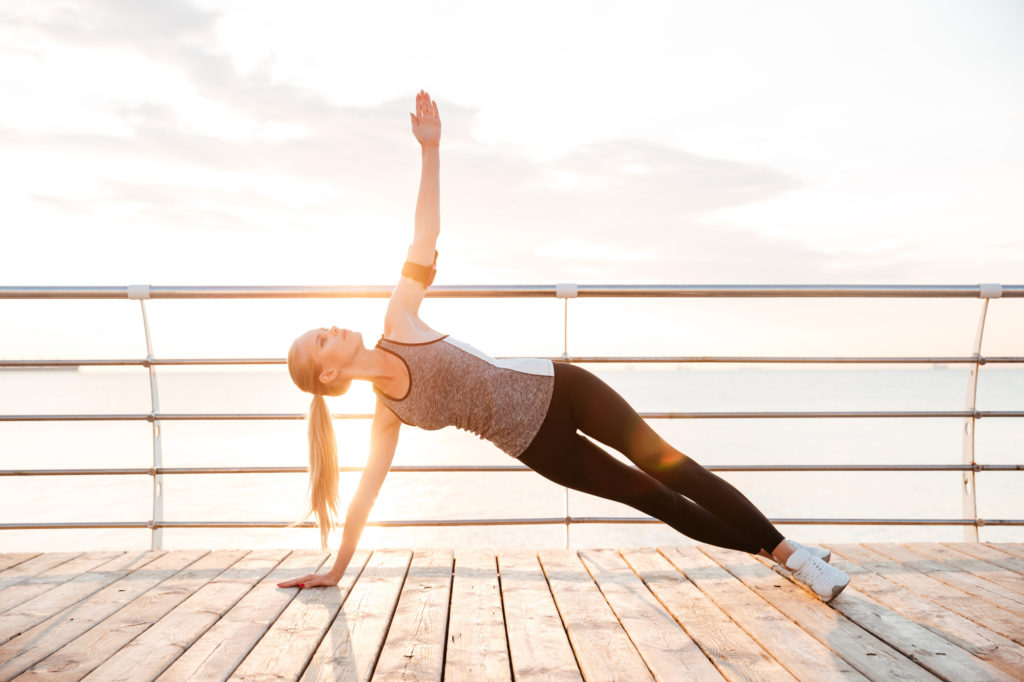Have you heard about the benefits of yoga? Are you looking to find the right type of yoga for your physical needs and body type?
Yoga is more than just a great way to get fit, improve your strength, and help you relax. It’s a way of life that can increase your energy, brighten your mood, and generally make you happier and more productive.
But what if you’re just starting out? What are the different types of yoga, and how can you make them work for you?
Here are some yoga options you’ve got to know about.
1. Restorative Yoga
Restorative yoga is one of our favorite types of yoga for beginners. It uses props to restore your body and allows you to relax deeply. Classes generally involve dim lights, soft music, and even blankets.
Restorative yoga is an excellent way to heal your body and boost your immunity. It can also help with balance and mood regulation.
Restorative yoga is an excellent choice for beginners because of its slower pace and mellow movements. It’s also a great option if you suffer from injuries or chronic pain.
2. Hatha Yoga
Hatha yoga is another gentle option popular with beginners. It involves moving slowly through a variety of poses while you focus on your breath. Meditation is also involved.
Hatha yoga is known for improving the symptoms of anxiety and depression. It can also help to relieve back and neck pain. Hatha yoga is also helpful for relieving stress and creating mindfulness.
3. Vinyasa Yoga
Vinyasa yoga is a great introduction to yoga practices if you’re just starting out. It involves using your breath to move from pose to pose.
Vinyasa yoga can help with strength, flexibility, and breath control. When you’re ready to try Vinyasa yoga, all you’ll need is a mat and comfy clothes.
Be sure to dress in layers because you may get hot once you start moving more. And you may want to bring a yoga block or two for support if you’re new to yoga.
4. Aerial Yoga
If you’re looking to add a bit of variety to your yoga routine, aerial yoga is a unique take on yoga practices that involves using silk hammocks to support you while you move through a variety of poses. One of the main benefits of aerial yoga is that it can allow you to try more challenging poses without putting additional pressure on your head, spine, or shoulders.
The aerial yoga hammock can help you improve flexibility and strength. It can help to improve your upper body and core strength because you’ll be using your arms, abs, and shoulders to hang onto the hammock for support. Students of aerial yoga usually find that they become better at all types of yoga because they can stretch further than they would on a mat.
5. Hot Yoga
Hot yoga is a variation of the practice that involves yoga in a very hot studio. In fact, the room is often heated to above 100 degrees Fahrenheit.
Hot yoga involves poses and breathing exercises. It’s known for burning more calories than traditional yoga. Hot yoga is also a great way to relieve stress, ease depression, and nourish your skin.
If you’re going to try hot yoga, you’ll want to make sure you well hydrated before, during, and after your session. You may also want to bring a towel and special socks that can help you get a better grip on the studio floor once temperatures start to rise. You may also want to consider a different type of yoga if you have certain pre-existing health conditions such as low blood pressure or heart disease.
6. Yin Yoga
Yin yoga is another option that’s popular with beginners because of its slower, more meditative pace. It focuses on developing your deeper connective tissues, including your ligaments and joints. The goal of yin yoga is to increase flexibility.
Yin yoga can help to restore your range of motion and increase your resistance to stress. It can also provide improvements in gratitude and self-compassion.
7. Ashtanga Yoga
Ashtanga yoga involves deep, controlled breathing and the repetition of a series of eight poses in quick succession.
Ashtanga yoga can be somewhat physically demanding, but it has a number of wonderful benefits. These include reduced body fat, improved muscle tone, and better cardiovascular fitness. It can also help to lower your blood pressure and increase your focus and creativity.
Ashtanga yoga is challenging and could be a good option once you’ve been practicing other types of yoga for a while.
9. Iyengar Yoga
Iyengar yoga focuses on alignment and using props for a safe, structured workout. Poses are held for a longer period of time. Props may include belts, blocks, and pillows. Beginner yogis and those with injuries may benefit from Iyengar-style workouts.
Iyengar yoga is great for helping with posture or structural problems. It can also help to improve your mood and release emotional tension. Iyengar yoga can also serve to increase your energy and concentration.
Advocates of Iyengar find that it tones their muscles and relieves pain caused by slouching or hunching. If you’re back and neck are often misaligned, Iyengar yoga could be a great way to start.
The Different Types of Yoga
If you’re looking to start a yoga practice, you’re on your way toward a healthier lifestyle! Weight loss and increased muscle tone are just some of the benefits you’ll enjoy. Once you’ve learned about the different types of yoga, you’ll be able to make an educated decision about the best type of class for you.
Don’t stop improving your health now. For more great advice, read our blog today.

